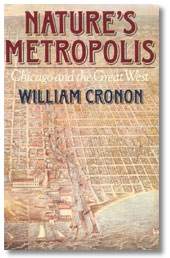Author: Joe Kelly
Title: A Damn Near Perfect Game
Publication Info: Diversion Books (2023) 
Summary/Review:
Major League Baseball relief pitcher Joe Kelly is primarily known for two things: 1. with the Red Sox, starting a fight with the Yankees after one of their player’s dirty takeout slide, and 2. with the Dodgers, making a pouty face at Carlos Correa soon after the revelations of the Astros’ sign-stealing scandal. Kelly covers both of these incidents and their aftermaths in full detail early on in this memoir. But the better part of the book follows.
Coming from a troubled background, Kelly found an escape in baseball. As a professional player, he’s part of a younger generation who have spurned the “unspoken rules” of baseball’s elders and recognized that baseball is a game and it’s supposed to be fun. In Kelly’s analysis, baseball can better engage fans by embracing the fun and allowing the players to show their personality. Through stories of the game as a player and a spectator, Kelly demonstrates that “baseball isn’t boring.” In the final chapter, other players, Hall of Famers, as well as actors, musicians, and athletes from other sports express their love for baseball.
Favorite Passages:
Baseball is different from any other sport, where often you can watch the last few minutes of a game and get the gist. The NBA? The NFL? The NHL? What you see is what you get. Nothing wrong with any of it. The fast pace, the tight focus on a moving object, the made-for-TV rhythms of the season—they’re all tailor-made for today’s fans. Baseball? It’s a bit more complicated and that’s okay. Baseball makes you think. It makes you talk. Questions are being asked and answered. Why is that player doing this or that? And when the answers do arrive, the world somehow always seems to be a little bit better of a place. If you’re patient enough, you can see that baseball is a combination of chess, ballet, a classroom, and cannon fire. When you’re watching bat flips, punchouts, home-run-robbing catches, and laser throws from the warning track, it’s easy to remember all the feels.
Baseball is built on emotion. That’s a fact. The feeling of wanting to explode in just the right way at just the right time is what the whole experience is about. Swinging a bat. Throwing a ball. Bursting down a base path. Springing toward the perfect fielding position. The heart rate shoots up and the body follows in lockstep. And in between all those actions, there’s the other side: controlling your emotions in order for your mind and body to ultimately take over. The battle between nerves, muscle memory, memories, and excitement is an every-game, every-inning, every-batter, every-pitch thing. That is what this sport demands.
For years, the invisible book of unwritten rules suggested batters pimping homers should be frowned on. Respect the pitcher. Respect the game. News flash: If you really want to respect baseball, understand that we need more of that personality. Pimp away. Take a minute rounding the bases. Pitchers, throw your hats up in the air. Pump your fists. Whatever you want. If somebody hits a home run off me, I’m already fucking pissed. The hitter doing whatever he’s going to do won’t make me any angrier.
For instance, Major League Baseball has access to all of these Wall Street executives, so why in the world can’t it set up a committee for players who are retired or about to be retired that can help them with investment information? The unfortunate fact is that 60 percent of MLB players who retire have financial problems. Or how about this? Set up an independent committee involving mental health professionals who can really help a problem that is lingering among players these days. There needs to be somebody for these guys to talk to if they don’t trust who the clubs are offering up, or if there is an issue that crops up in the middle of the night. Right now everything has to be done through the club, and that doesn’t always work for a player.
What teams and Major League Baseball were trying to do was treat their players like they were in the Army. That works in the Army, because discipline and consistency are essential to the work it does. There’s no messing around, and everybody better be on the same page. Understood. But we’re playing a game. It’s not the same.
Fun and encouragement have to stay at the top of our lists. We have to remember that while we are obsessing over having this game take root, these kids are fending off the pitfalls of bullying, puberty, and those first girlfriends or boyfriends. Everything leading to high school is end-of-the-world stuff. Baseball should be part of the solution, not another part of the problem.
Kids are being asked to define themselves at such a young age, being pushed into sports specialization by parents and coaches who fear falling behind. That’s insane to me.
I will never forget one of my favorite moments when Stephen Drew hit a home run in Game 6 of the 2013 World Series and I was on-deck and something just clicked in my brain when he hit it. I knew it was gone so I immediately turned around and watched the fans. That’s the greatest thing you can do as an athlete. Our success is really cool, but to see all the fans rise up together, high-fiving and watching strangers hug. Shit, I get chills just thinking about it. – David Ross
Recommended books:
Rating: ***1/2










